
The Borders
The Scottish Borders stretch from just south of Edinburgh on to the border with Northumberland, England. The eastern leg of the River Tweed defines the border and is often referred to as the Rio Grande of Scotland. In ancient times, this area was one of continued conflict between the Scots and the English. It is also the location of the town of Melrose which is the home of our excellent coachman, Mr. Barry Austin. (By one of those strange twists of fate, I spent my formative (and sometimes fugitive) years on a street in Jackson, TN, named...Melrose!)
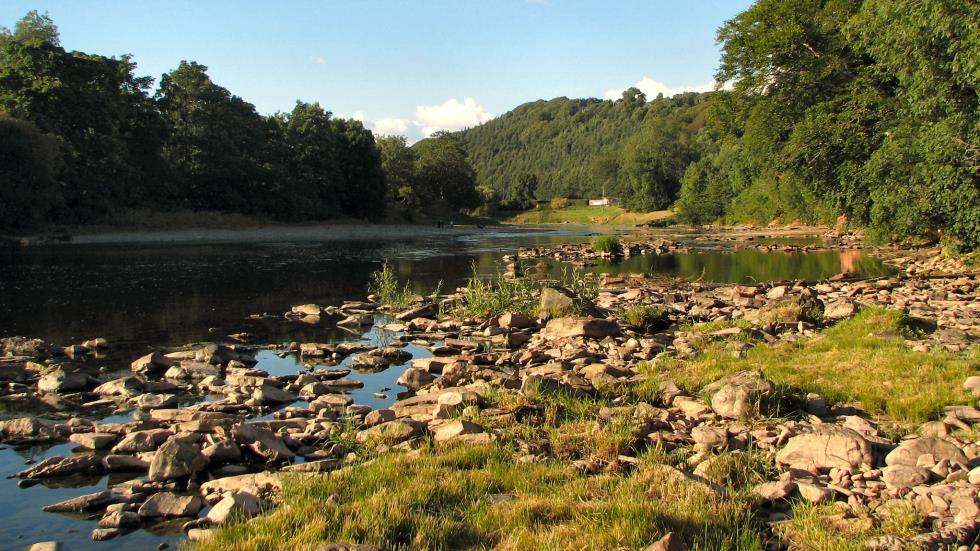 The Dryburgh Abbey Hotel
The Dryburgh Abbey Hotel
The Dryburgh Abbey Hotel sits on the eastern bank of the River Tweed just southeast of Melrose. The baronial country house was constructed in 1845 as the private house of Lady Giselle Baillie. It was modernized by her brother, Lord Jerviswoode, in 1875. It remained in the family until 1932 when it was bought by the Scottish Motor Traction Company. They added the east wing and converted it to a "tourist hotel". Over the years the ownership has changed several times.
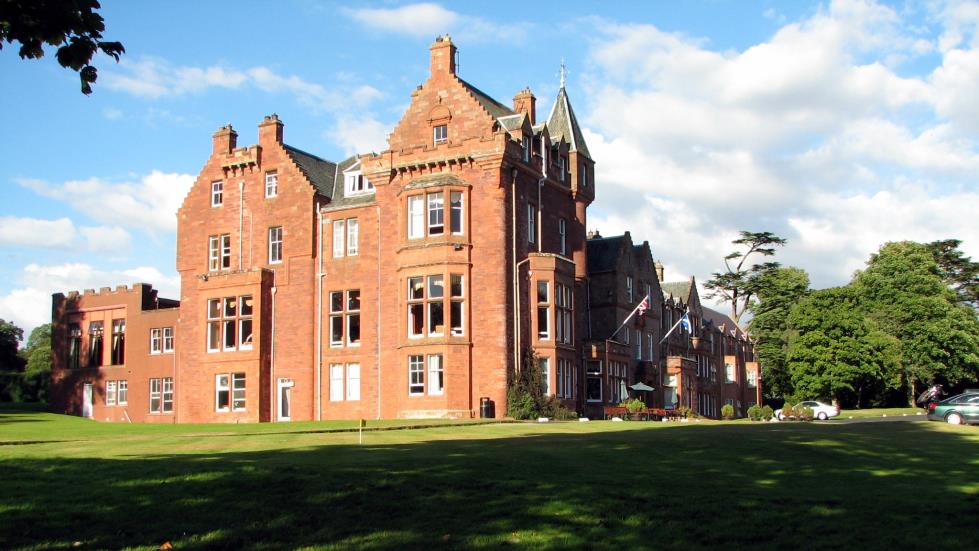
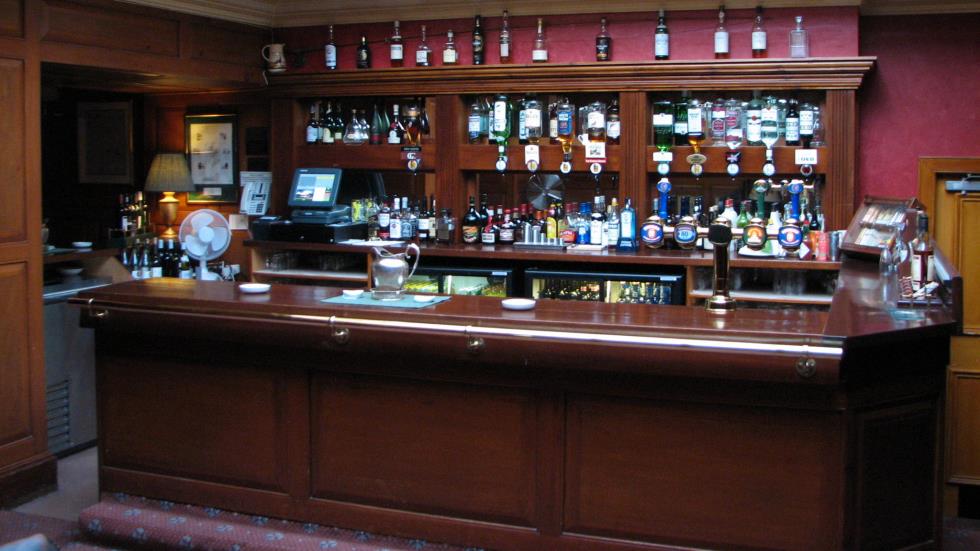
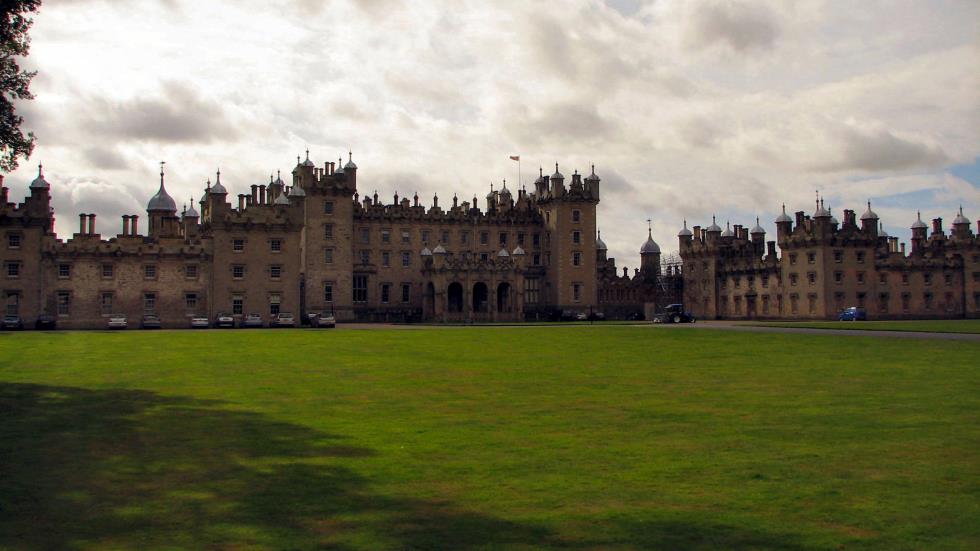
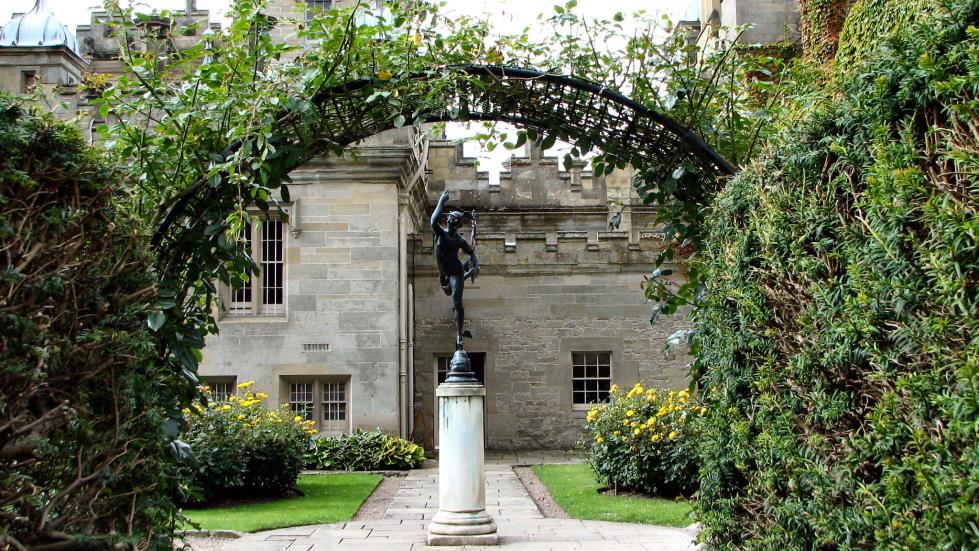 Abottsford
Abottsford
In the heart of the Scottishh Borders is the country house of the poet and novelist Sir Walter Scott. Scott purchased the small farm in 1811 and named it Abbotsford after the nearby ford used by the monks of Melrose Abbey. He expanded it several times from 1811 till 1824 with its final form, as described by Scott, a "a kind of Conundrum Castle". Here he gathered a veritable horde of ancient furniture, arms and armor and other relics of Scottish history and culture. And here I gathered my largest collection of photographs of all of my trips to Scotland.
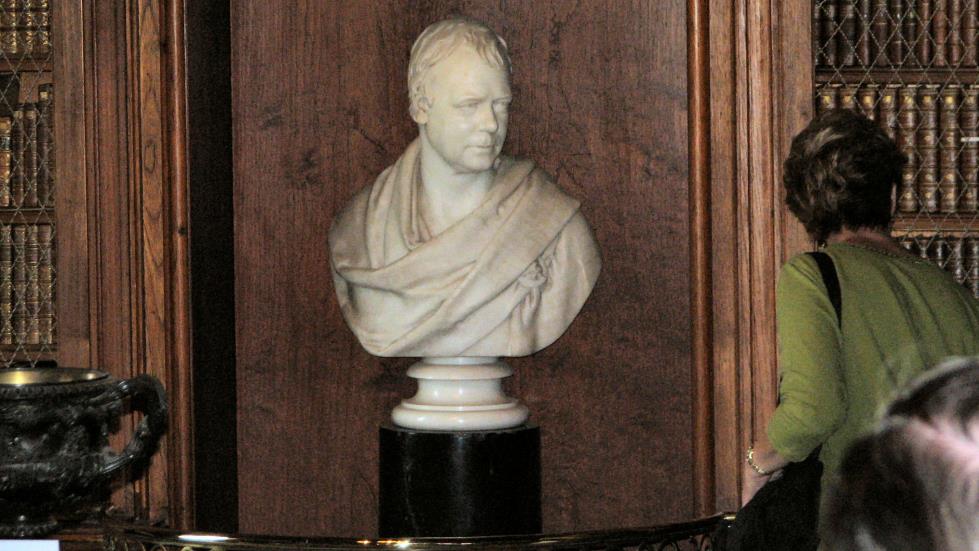
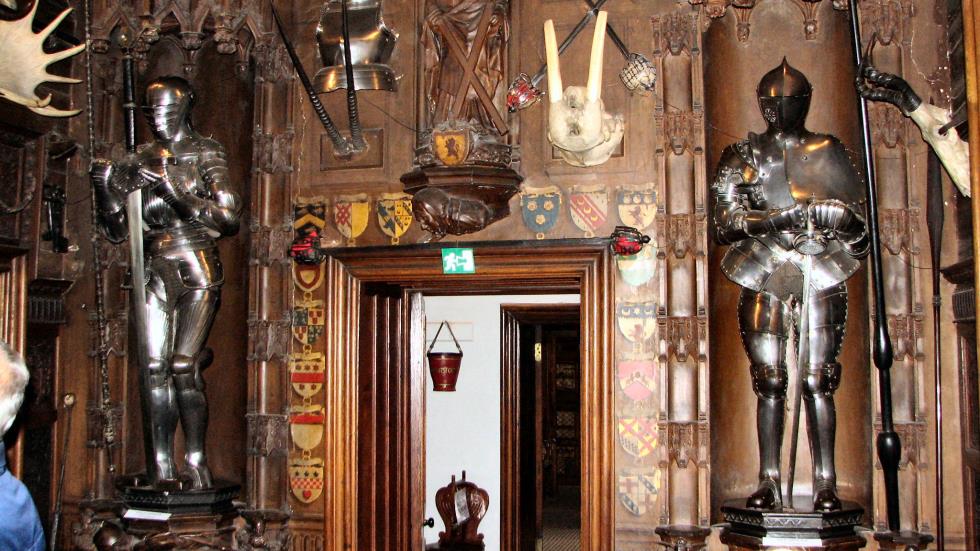

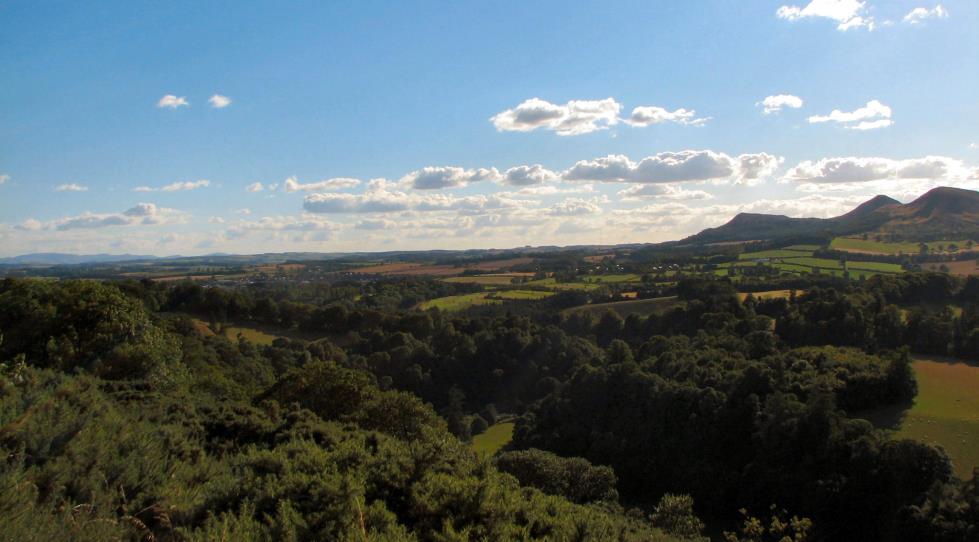 Dryburgh Abbey
Dryburgh Abbey
The Dryburgh Abbey was founded 1150AD on St. Martinmas by Premonstratensian priests. It was burned and rebuilt several times including in 1322 and 1385, each time being rebuilt. It was finally burned by Edward Seymour in 1544 during the Eight Years' War with Scotland.
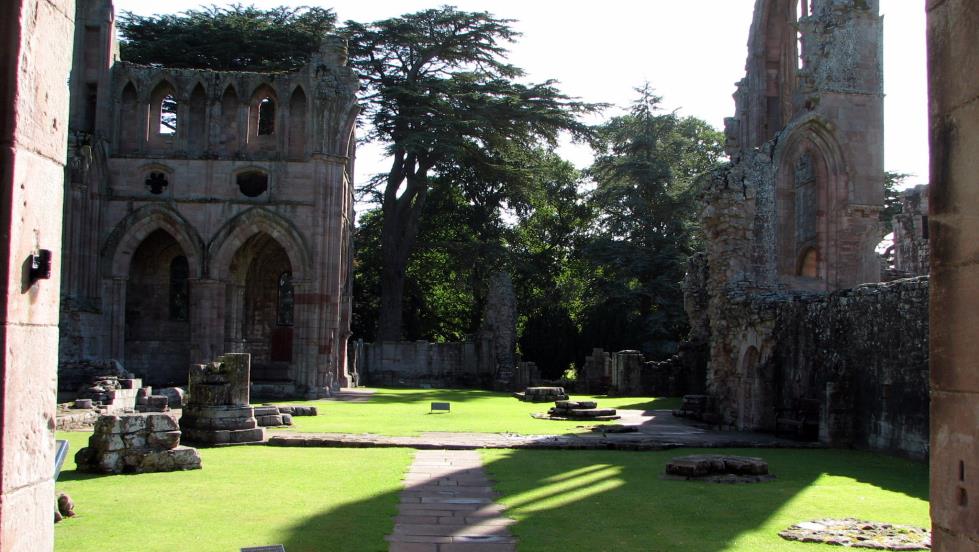 Melrose Abbey
Melrose Abbey
Melrose Abbey, formally St. Mary's Abbey, was founded in 1136 AD by Cistercian monks at the request of King David I (my 26th great grandfather) and became the mother church of the order in Scotland. It was the first Cistercian abbey in Scotland and is the sister abbey to Tintern Abbey in Wales. In 1322 the town of Melrose was attacked by Edward II, 4th son of Edward I, Hammer of the Scots, and much of the abbey was burned. It was rebuilt by order of Robert the Bruce. In 1385 it was again burned, this time by Richard II, son of Richard I, the Lionheart, and was slowly rebuilt over the next 100 years. Finally, in 1544 during the Eight Years' War it was badly damaged and was never fully repaired. Its final disgrace was issued by Oliver Cromwell during the English Civil War.
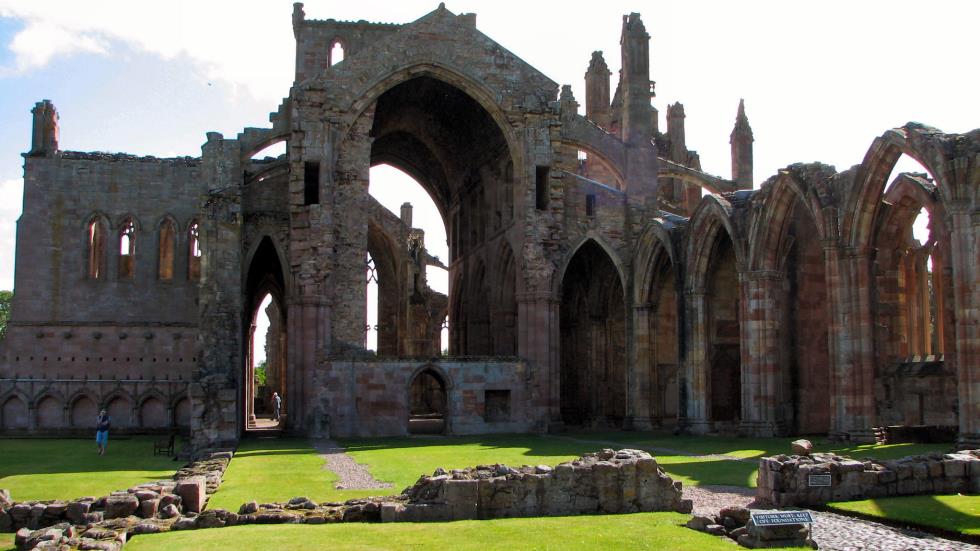
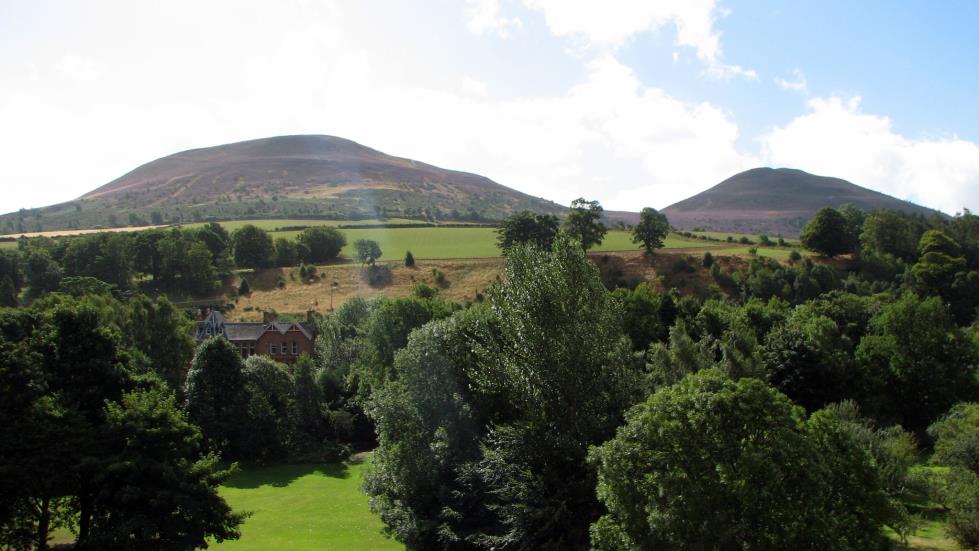
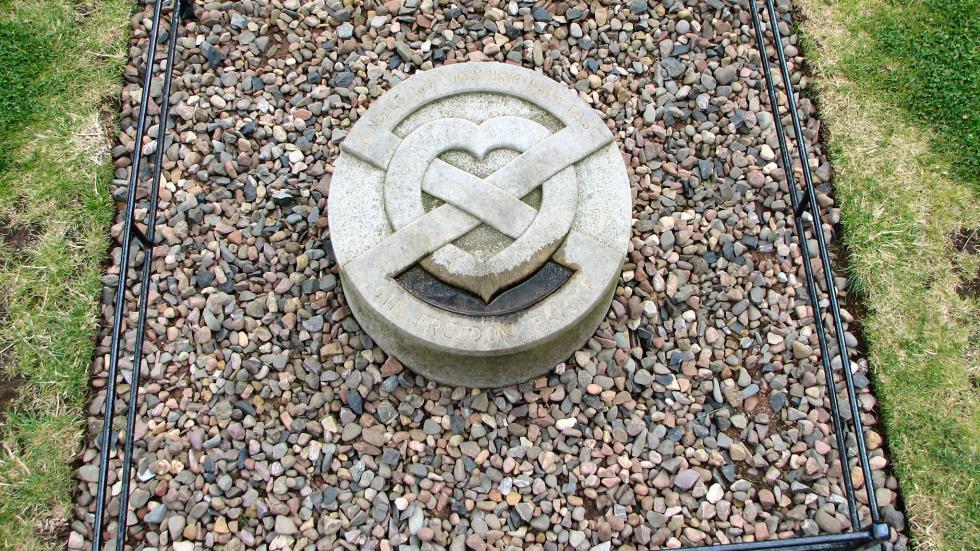
The Scottish Borders stretch from just south of Edinburgh on to the border with Northumberland, England. The eastern leg of the River Tweed defines the border and is often referred to as the Rio Grande of Scotland. In ancient times, this area was one of continued conflict between the Scots and the English. It is also the location of the town of Melrose which is the home of our excellent coachman, Mr. Barry Austin. (By one of those strange twists of fate, I spent my formative (and sometimes fugitive) years on a street in Jackson, TN, named...Melrose!)
The Dryburgh Abbey Hotel sits on the eastern bank of the River Tweed just southeast of Melrose. The baronial country house was constructed in 1845 as the private house of Lady Giselle Baillie. It was modernized by her brother, Lord Jerviswoode, in 1875. It remained in the family until 1932 when it was bought by the Scottish Motor Traction Company. They added the east wing and converted it to a "tourist hotel". Over the years the ownership has changed several times.
In the heart of the Scottishh Borders is the country house of the poet and novelist Sir Walter Scott. Scott purchased the small farm in 1811 and named it Abbotsford after the nearby ford used by the monks of Melrose Abbey. He expanded it several times from 1811 till 1824 with its final form, as described by Scott, a "a kind of Conundrum Castle". Here he gathered a veritable horde of ancient furniture, arms and armor and other relics of Scottish history and culture. And here I gathered my largest collection of photographs of all of my trips to Scotland.
The Dryburgh Abbey was founded 1150AD on St. Martinmas by Premonstratensian priests. It was burned and rebuilt several times including in 1322 and 1385, each time being rebuilt. It was finally burned by Edward Seymour in 1544 during the Eight Years' War with Scotland.
Melrose Abbey, formally St. Mary's Abbey, was founded in 1136 AD by Cistercian monks at the request of King David I (my 26th great grandfather) and became the mother church of the order in Scotland. It was the first Cistercian abbey in Scotland and is the sister abbey to Tintern Abbey in Wales. In 1322 the town of Melrose was attacked by Edward II, 4th son of Edward I, Hammer of the Scots, and much of the abbey was burned. It was rebuilt by order of Robert the Bruce. In 1385 it was again burned, this time by Richard II, son of Richard I, the Lionheart, and was slowly rebuilt over the next 100 years. Finally, in 1544 during the Eight Years' War it was badly damaged and was never fully repaired. Its final disgrace was issued by Oliver Cromwell during the English Civil War.
 To the Edinburgh Zoo
To the Edinburgh Zoo